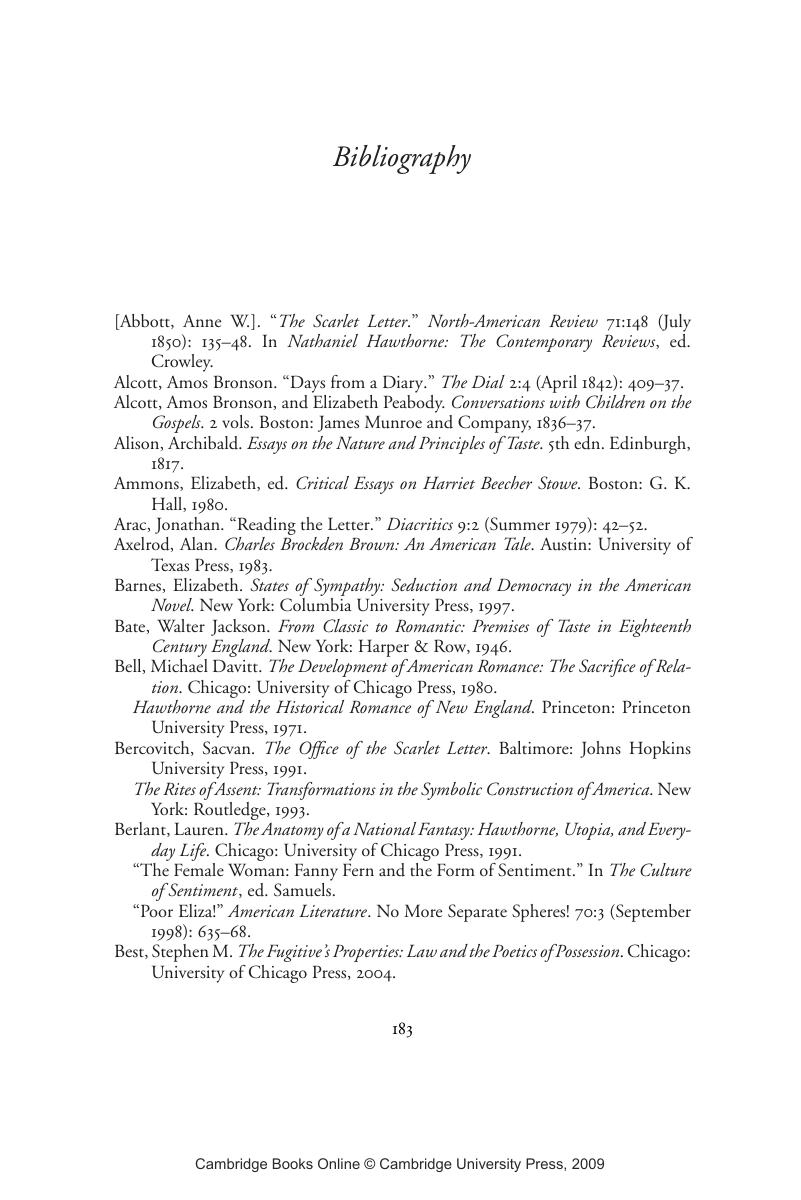Book contents
- Frontmatter
- Contents
- Acknowledgments
- Introduction: New Critical formalism and identity in Americanist criticism
- Chapter 1 Types of interest: Scottish theory, literary nationalism, and John Neal
- Chapter 2 Sensing Hawthorne: the figure of Hawthorne's affect
- Chapter 3 “Life is an ecstasy”: Ralph Waldo Emerson and A. Bronson Alcott
- Chapter 4 Laws of experience: truth and feeling in Harriet Beecher Stowe
- Notes
- Bibliography
- Index
- References
Bibliography
Published online by Cambridge University Press: 23 June 2009
- Frontmatter
- Contents
- Acknowledgments
- Introduction: New Critical formalism and identity in Americanist criticism
- Chapter 1 Types of interest: Scottish theory, literary nationalism, and John Neal
- Chapter 2 Sensing Hawthorne: the figure of Hawthorne's affect
- Chapter 3 “Life is an ecstasy”: Ralph Waldo Emerson and A. Bronson Alcott
- Chapter 4 Laws of experience: truth and feeling in Harriet Beecher Stowe
- Notes
- Bibliography
- Index
- References
Summary

- Type
- Chapter
- Information
- Formalism, Experience, and the Making of American Literature in the Nineteenth Century , pp. 183 - 193Publisher: Cambridge University PressPrint publication year: 2007



